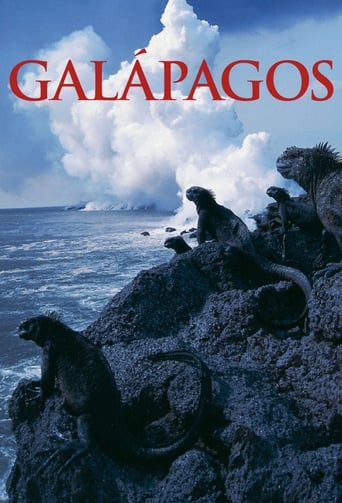lfisher0264
The photography is truly stunning and the animals, plants, scenery, waves, seals, sardines, rays, plankton are fascinating to watch. But the music is dreadful and distracting. Why does every moment have to be underscored with portentous pomposity? Tilda Swinton's narration is all on the same note, too. Every sentence is heavy with significance and an attempt to inject drama. Also, who writes wild-life film narration? Do they ever ask themselves if they're in the right job? This is the usual string of clichés, and sometimes is utterly ludicrous. The blue- footed booby's feet are "a handy brake". Feet are handy? Please! And the plankton float "in a sea of darkness" - they're already floating in the sea, you can't use it as a metaphor!!!! More facts please, and less appalling attempts at poetry. Turn off the sound and try different types of background music: Bach? Salsa?
Ed Uyeshima
There are a number of related documentaries on the market, including a Kenneth Branagh-narrated IMAX film ("Galapagos (IMAX)") and a personal journey with Richard Dreyfuss ("In the Wild: The Galapagos Islands with Richard Dreyfuss"), both produced in 1999. However, if like me, you have been enamored with the BBC's extraordinary "Planet Earth" series designed for high definition (aired here on the Discovery Channel), then you will find yourself equally drawn to this 2007 DVD of a three-part 2006 BBC series on the mythologized Galapagos Islands. Even though the scope is not nearly as ambitious this time, the result is almost as enthralling given the plethora of exotic, endemic species surviving on this isolated archipelago of nineteen volcanic islands. I was fortunate enough to tour the Galapagos on a schooner several years ago, and I can assure you that the outstanding visual quality of these programs captures as much of the distinctive flora and fauna of the islands as possible on the DVD.Aired stateside on the National Geographic Channel, the set consists of three fifty-minute programs. The first, "Born of Fire", provides a vivid archaeological history of the islands and shows how several of the most unusual species originated there and learned to co-habitate with each other. The second program, "Islands That Changed the World", looks at man's imprint on the islands, for better or worse, with an obvious emphasis on the work of Charles Darwin as he developed many of his theories about evolution based on his sightings here. It does take on the feel of a scholastic film with recreations of historical figures and events, but they do provide helpful context. The last is "Forces of Change", which forecasts the future with some coverage of the global warming issues but more of the focus on man's burgeoning presence on the islands and what is currently being done to maintain the natural environment.Unlike Sigourney Weaver's overly controlled narration on the U.S.-released version of "Planet Earth", actress Tilda Swinton imbues a greater sense of genuine enthusiasm over the dramatic images in this version. What is inarguable is the stunning cinematography, whether it's the satellite photos of the islands or the near-poetic movements of the animals spotlighted, for example, the first flights of the baby albatrosses, the dexterous swimming of the flightless cormorants, the multitudes of marine iguanas randomly spewing sea water from their lungs, and the proud ballooning of the red-bellied frigate birds. There is a surprising lack of real scientific data which could have made the environmental reports that much more enlightening. You also have to tolerate some repetitiveness between the programs since they were aired at separate times. Regardless, this is nature programming at its finest, especially for those mesmerized by the particular idiosyncratic pleasures of the Galapagos.

